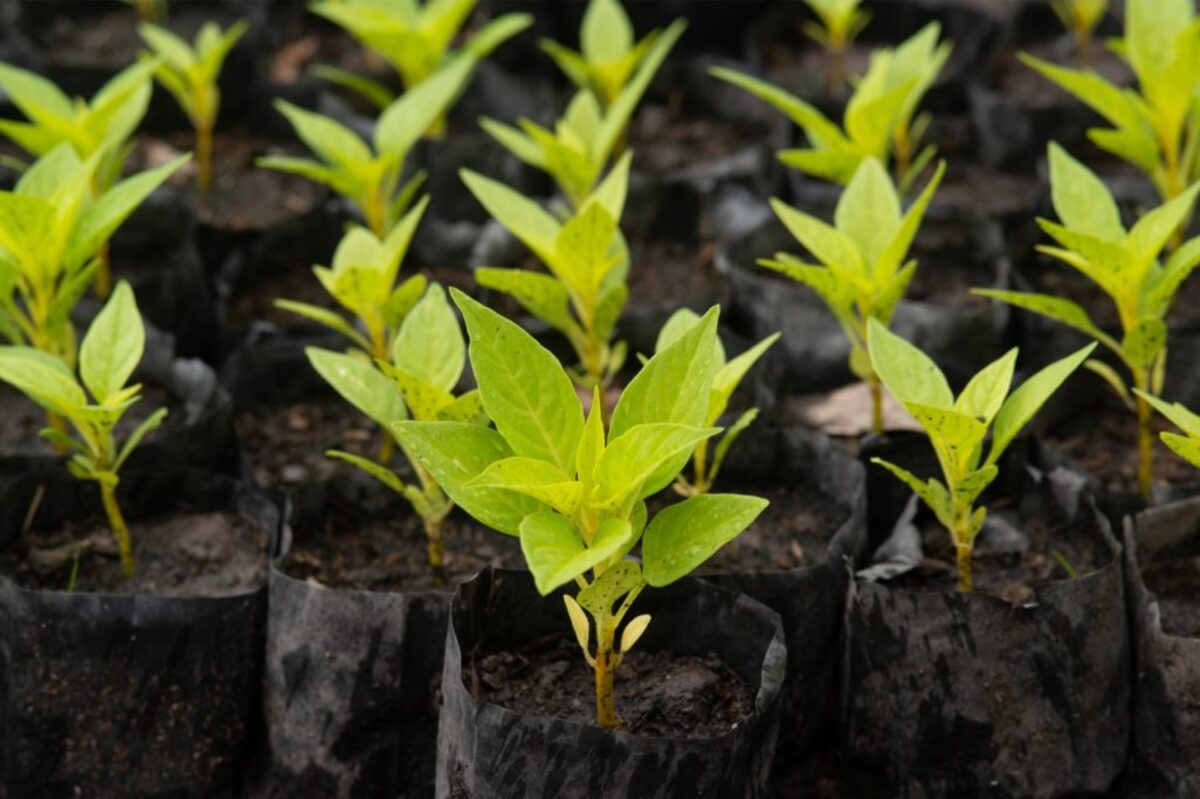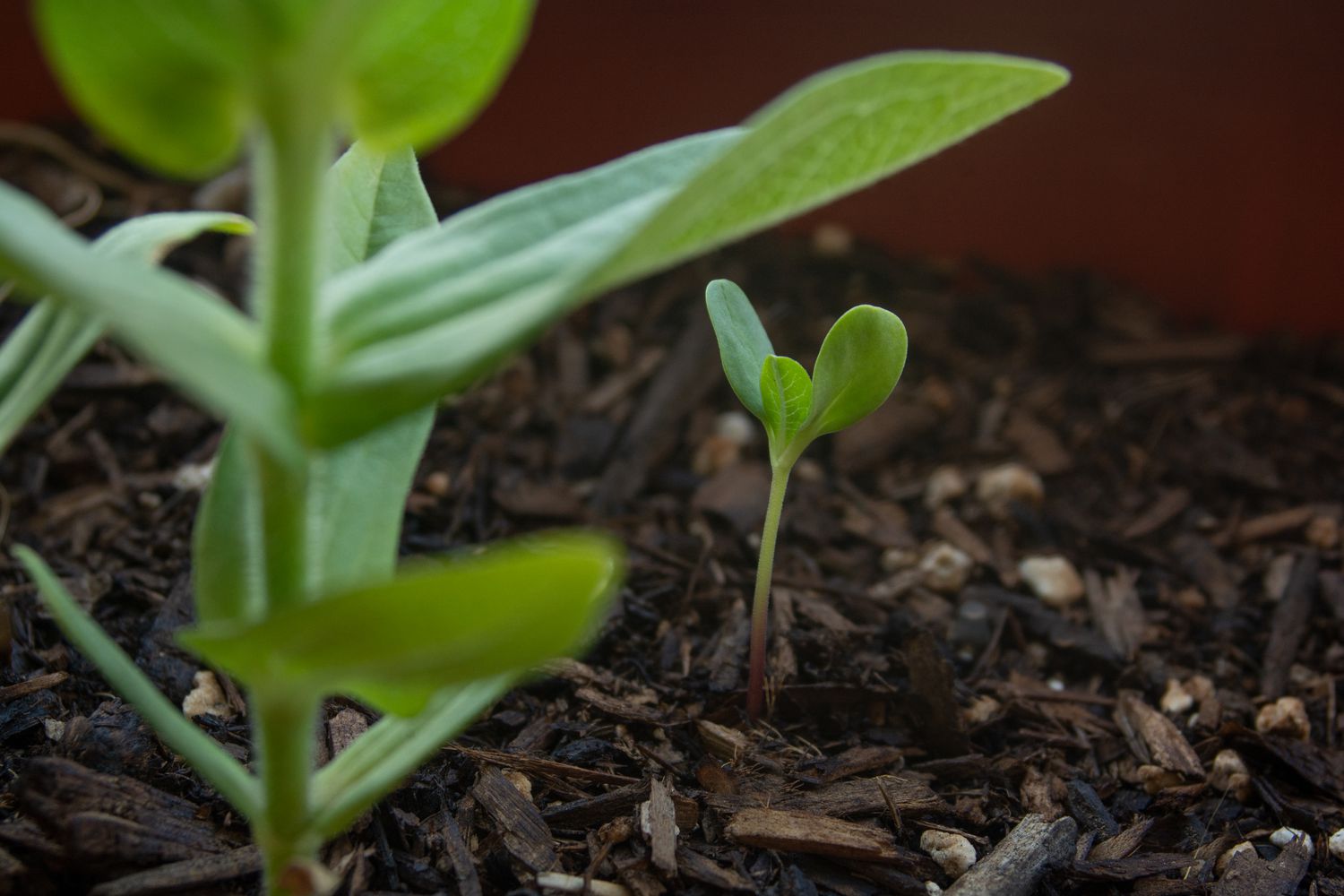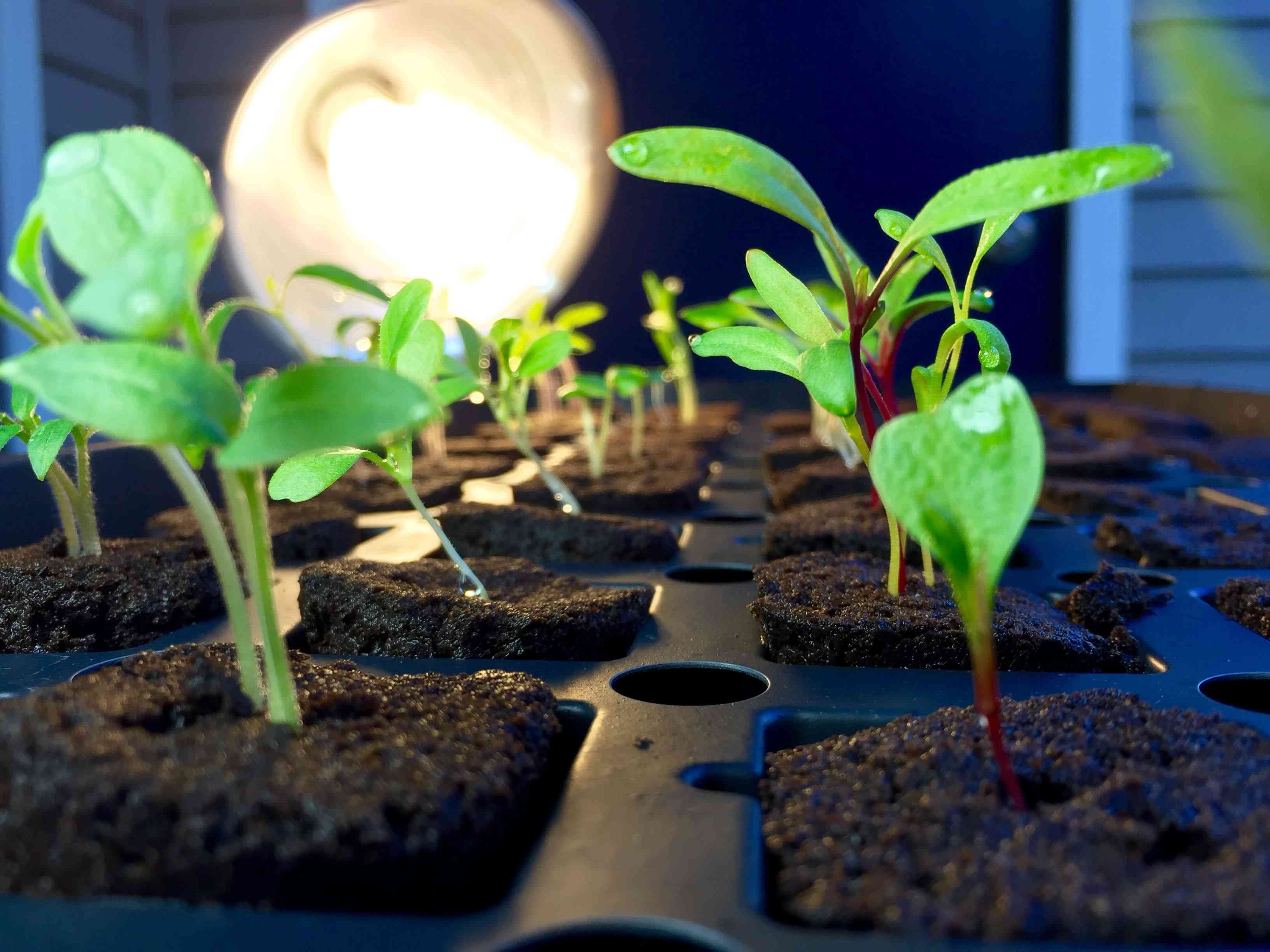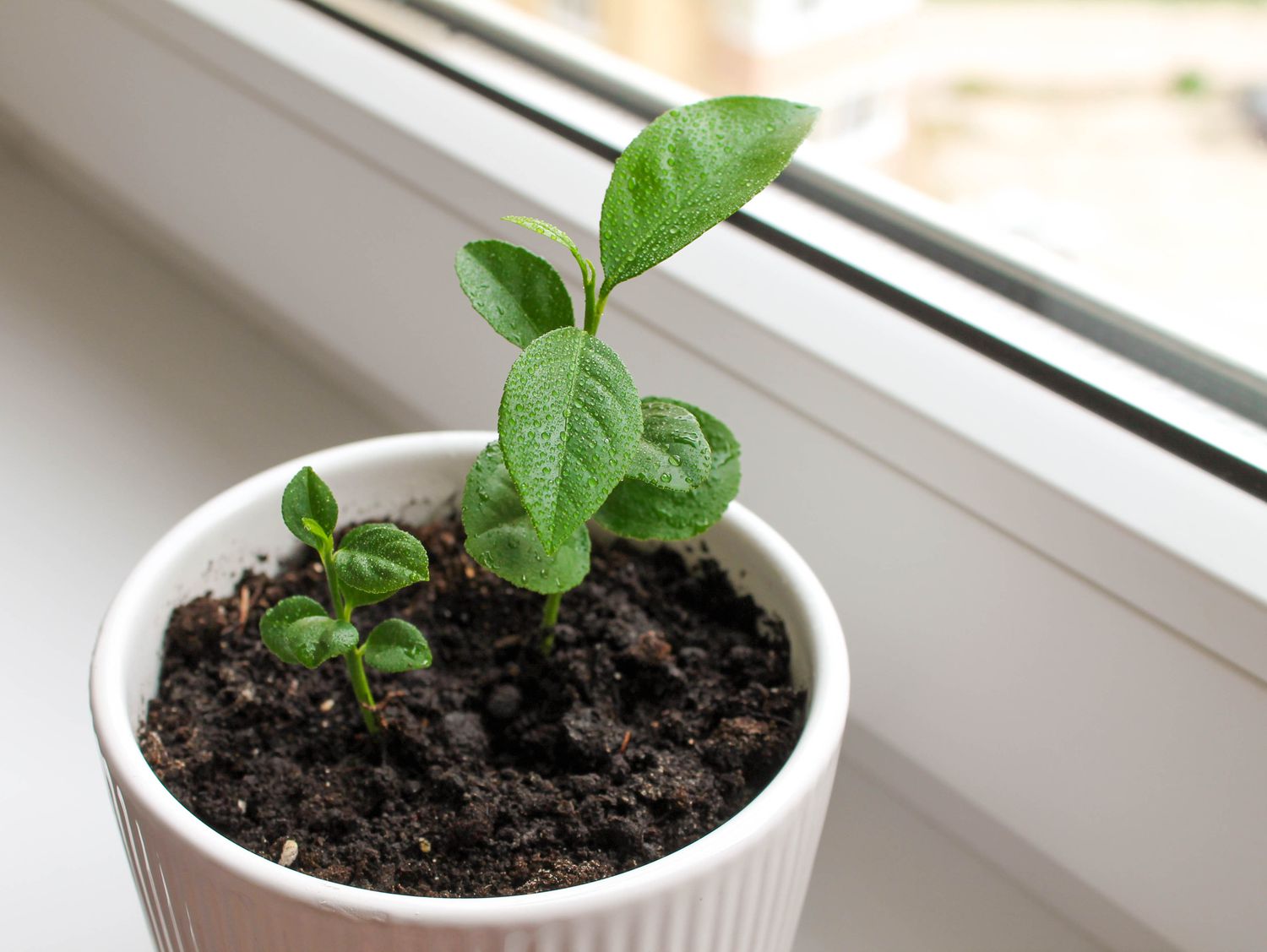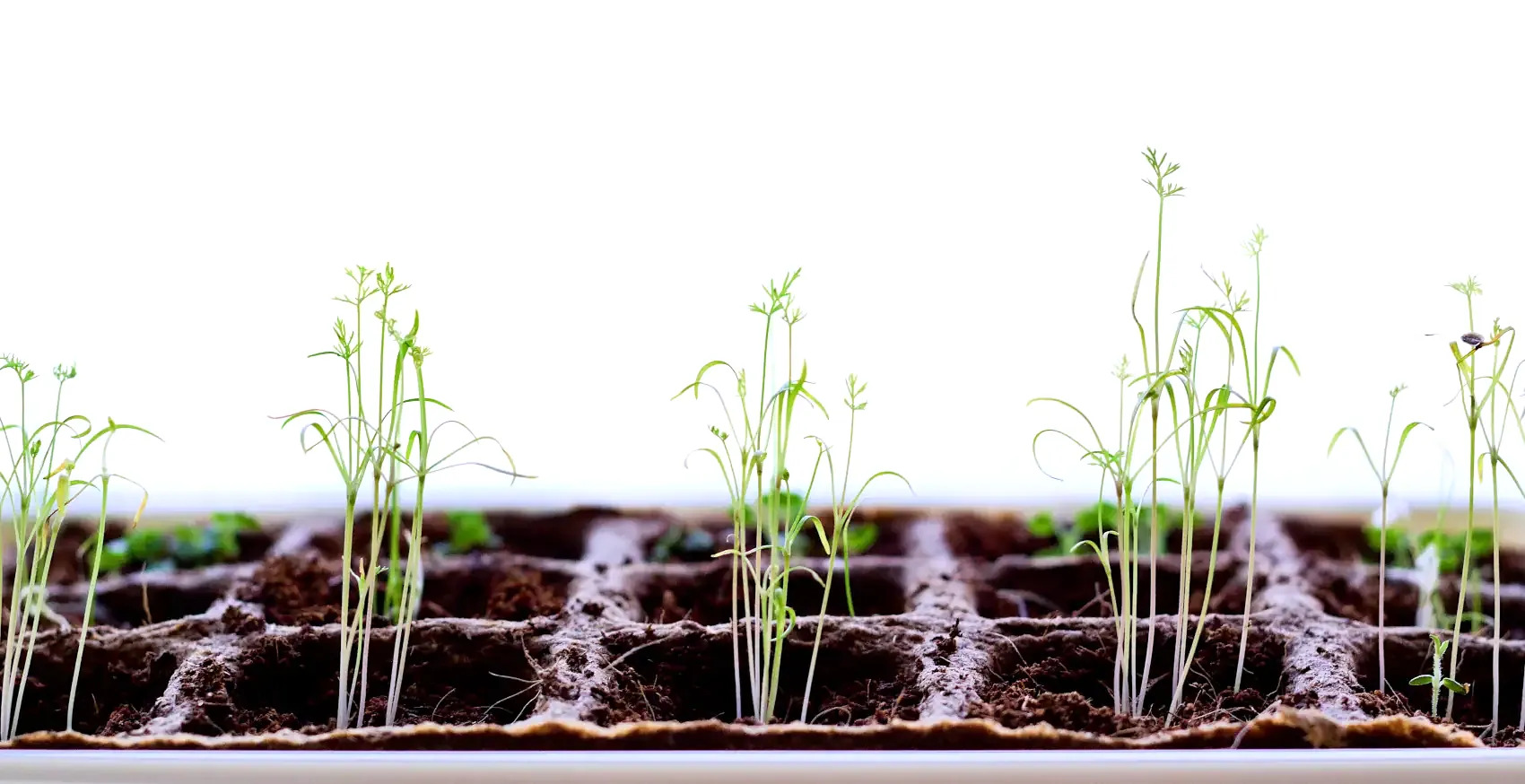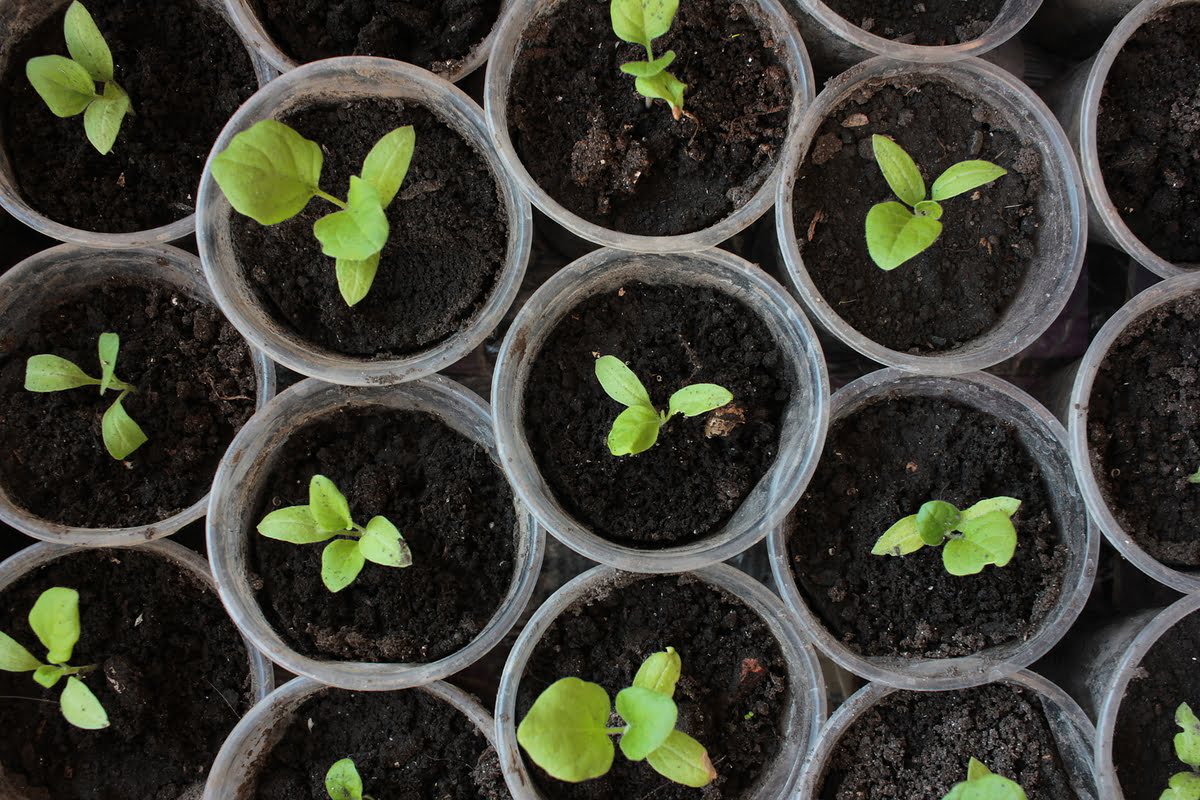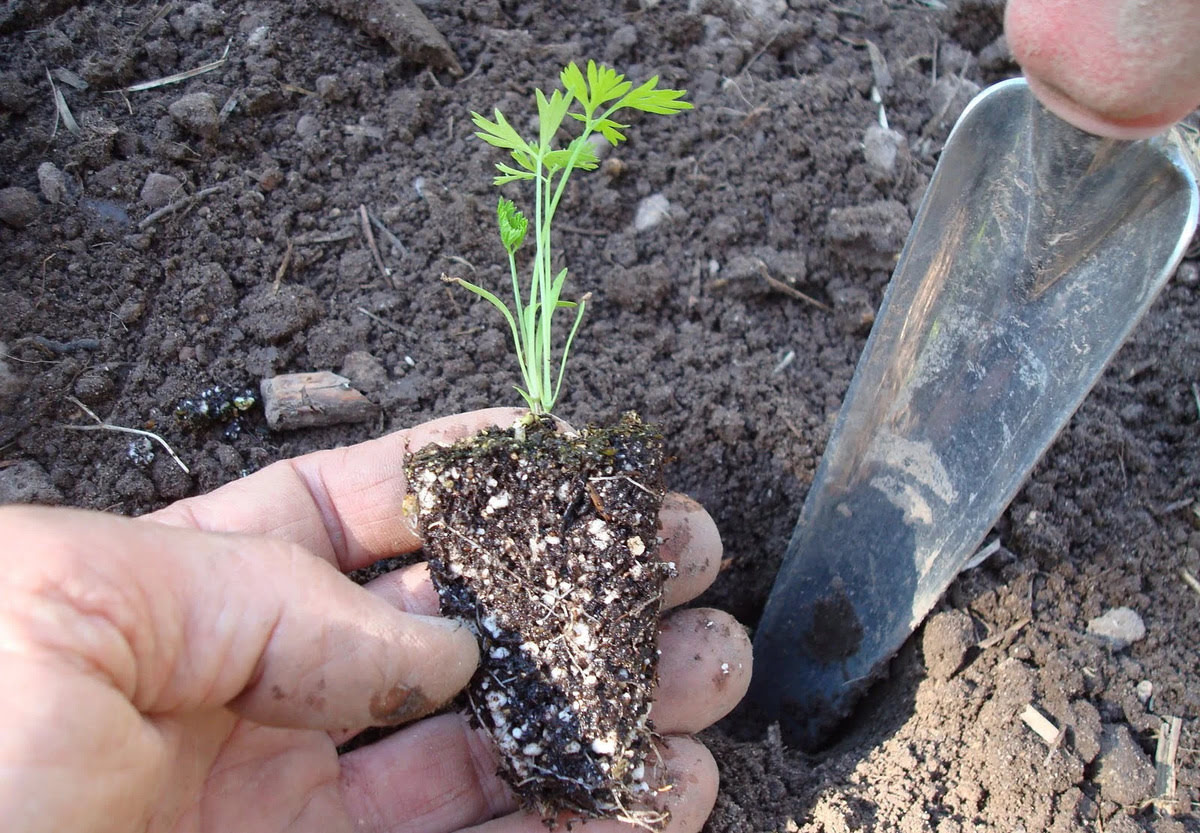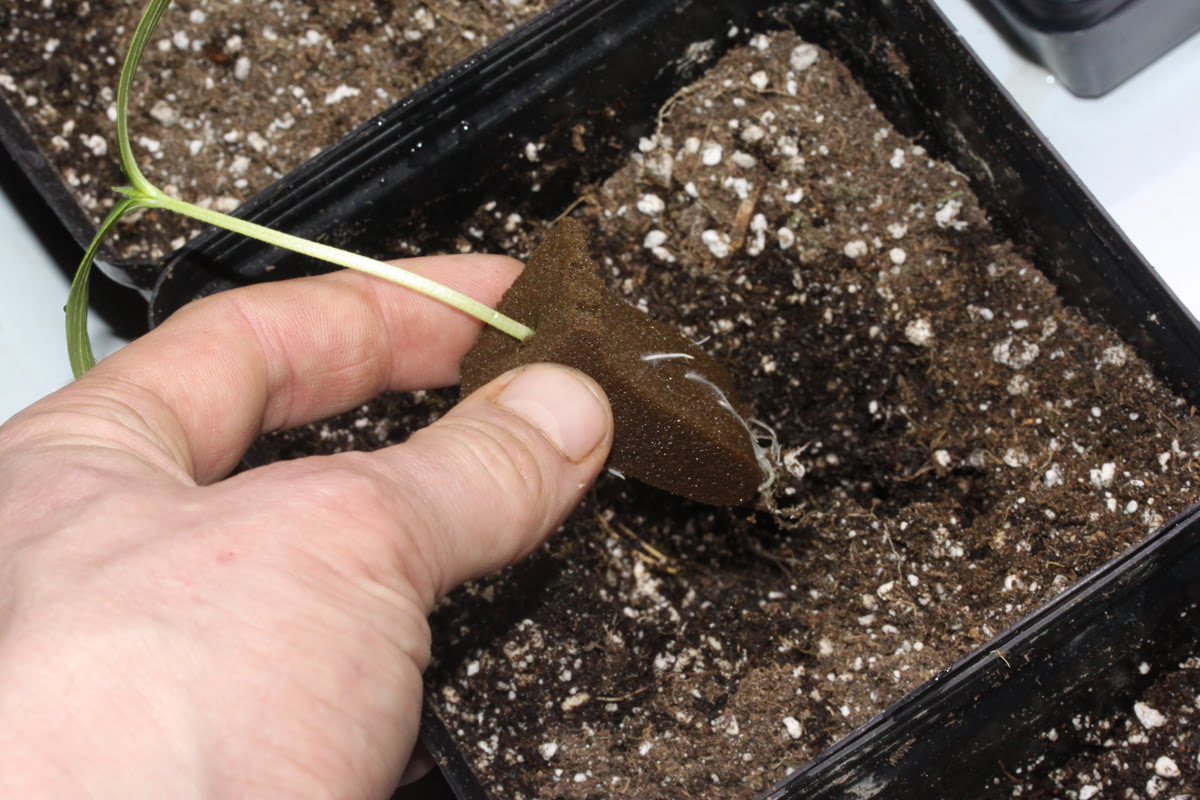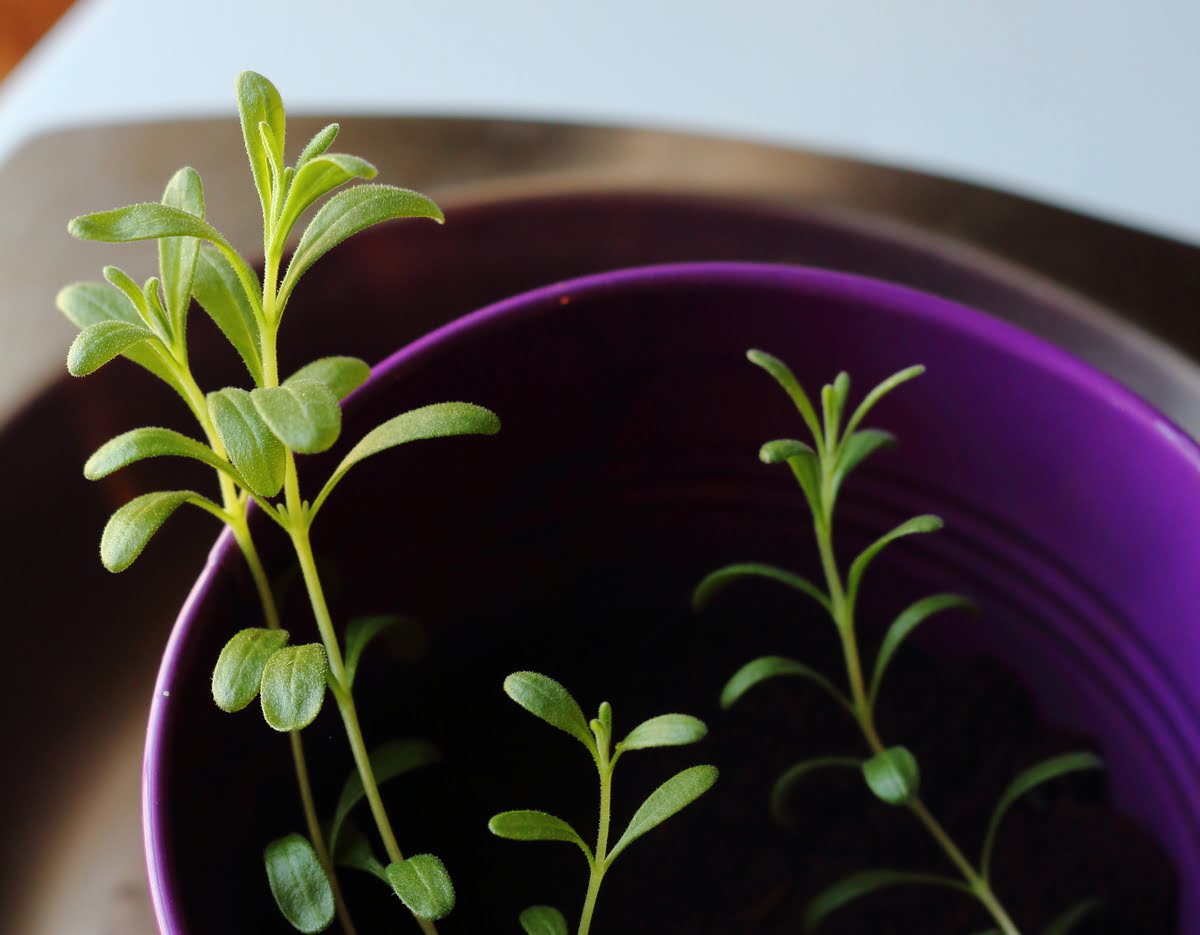Home>Types of Gardening>Edible Gardening>When To Transplant Pepper Seedlings To Bigger Pots
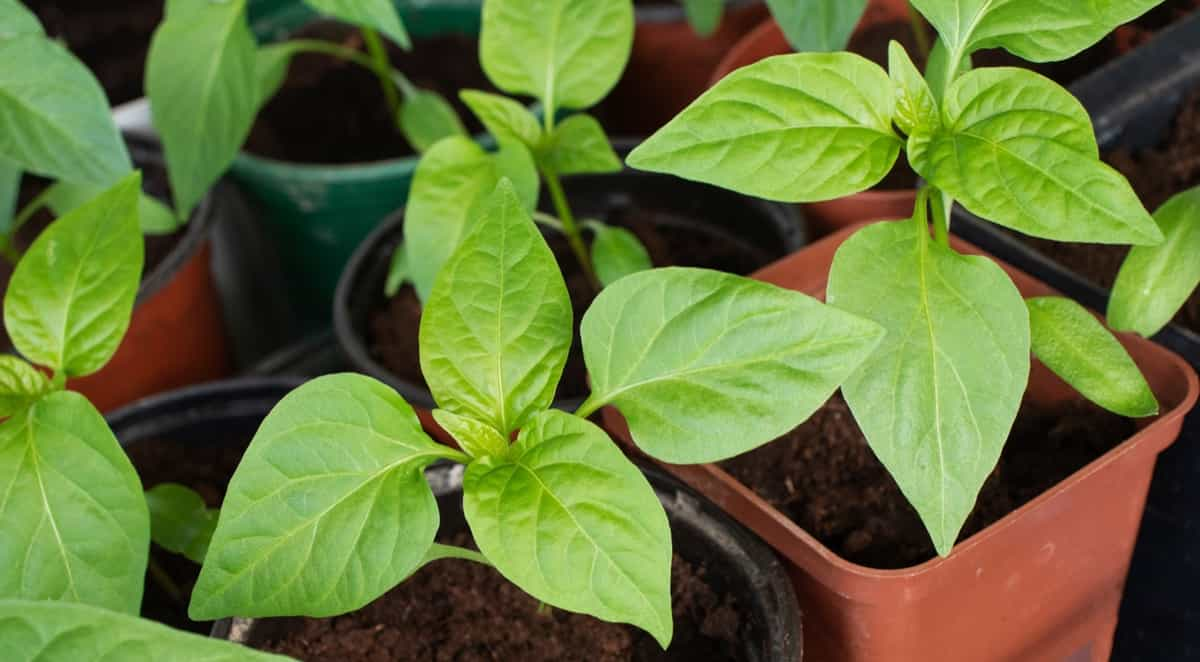

Edible Gardening
When To Transplant Pepper Seedlings To Bigger Pots
Published: January 6, 2024
Learn the best time to transplant pepper seedlings to larger pots for optimal growth. Get expert tips on edible gardening and container gardening.
(Many of the links in this article redirect to a specific reviewed product. Your purchase of these products through affiliate links helps to generate commission for Chicagolandgardening.com, at no extra cost. Learn more)
Table of Contents
Introduction
Transplanting pepper seedlings to bigger pots is a crucial step in their growth journey. It enables the young plants to continue flourishing in an environment that accommodates their increasing size and root development. This process demands careful consideration of timing, container selection, and nurturing practices to ensure the successful transition of the delicate seedlings.
Peppers, belonging to the nightshade family, are warm-season crops that thrive in well-draining soil and ample sunlight. Whether you started your pepper seeds indoors or purchased seedlings from a nursery, the eventual transfer to larger containers is vital for their sustained health and productivity. As these plants have specific requirements for growth, it's essential to understand the opportune moment for transplanting, the suitable containers, and the proper techniques to facilitate a seamless transition.
Throughout this article, we will explore the optimal timing for transplanting pepper seedlings, the selection of the right containers, the preparation of the seedlings for transplantation, the actual transplanting process, and the subsequent care required to support the thriving of the transplanted seedlings. By delving into these aspects, you will gain valuable insights into the best practices for ensuring the successful and robust growth of your pepper plants as they transition to larger pots.
Choosing the Right Time to Transplant
Determining the opportune moment to transplant your pepper seedlings is crucial for their successful acclimatization to larger pots. Typically, pepper seedlings are ready for transplanting when they have developed a sturdy stem, at least four sets of true leaves, and roots that are beginning to fill the current container. It’s important to avoid waiting too long to transplant, as overcrowded root systems can hinder the plants’ growth and overall health.
One key consideration when deciding on the timing of the transplant is the local climate and the anticipated outdoor growing season. If you plan to move your pepper plants outdoors, ensure that all risk of frost has passed and that the soil has warmed to around 60°F (15°C). This is usually a few weeks after the last expected frost date in your area. Transplanting too early can expose the seedlings to cold temperatures, stunting their growth and potentially causing irreparable damage.
Additionally, it’s important to observe the seedlings for signs of stress or stunted growth, which may indicate that they have outgrown their current containers. If the plants appear crowded, with roots visibly filling the container and growth slowing, it’s likely time to initiate the transplanting process.
Keep in mind that transplant shock, the temporary setback in growth and development following transplantation, is a natural occurrence. By choosing the right time to transplant, you can minimize the impact of transplant shock and support the seedlings’ seamless adjustment to their new containers.
Ultimately, the ideal timing for transplanting pepper seedlings to bigger pots balances the plants’ developmental stage, environmental factors, and the avoidance of overcrowding. By carefully assessing these elements, you can ensure a smooth transition for your pepper seedlings, setting the stage for robust growth and bountiful harvests.
Selecting the Right Containers
Choosing the appropriate containers for transplanting your pepper seedlings is a critical aspect of their continued growth and vitality. The selected containers should provide ample space for the plants’ roots to expand, excellent drainage to prevent waterlogging, and a supportive environment for healthy development.
When it comes to container materials, options abound, each with its own set of advantages. Plastic pots are lightweight, affordable, and retain moisture well, making them suitable for pepper plants. Additionally, they are available in various sizes, allowing you to accommodate the specific needs of your seedlings as they progress. Terra cotta pots, known for their breathability, are also a viable choice, promoting good air circulation around the roots. However, they may require more frequent watering due to their porous nature.
It’s essential to select containers that are at least 3-4 inches larger in diameter than the current pots to provide ample room for root expansion. This ensures that the plants have sufficient space to thrive without becoming root-bound. Additionally, opt for containers with drainage holes at the bottom to prevent water from accumulating and causing root rot.
For gardeners seeking a sustainable and customizable option, fabric grow bags are gaining popularity. These breathable containers promote air pruning of the roots, preventing them from becoming tangled and circling within the pot. Moreover, fabric grow bags are space-efficient and can be easily stored when not in use, making them a versatile choice for growing peppers in limited areas.
Consider the long-term growth of your pepper plants when selecting containers. While the seedlings may initially require small to medium-sized pots, envision the space they will need as mature plants. This foresight allows you to plan for eventual repotting or transplanting into larger containers as the plants flourish.
By carefully choosing the right containers for your pepper seedlings, you provide them with a supportive environment to thrive and establish strong, healthy root systems, setting the stage for robust growth and abundant harvests in the seasons to come.
Preparing the Seedlings for Transplanting
Prior to transplanting your pepper seedlings to larger pots, it’s essential to prepare them for the transition to their new growing environment. This preparation involves several key steps aimed at minimizing stress and ensuring the seedlings’ successful acclimatization.
One crucial aspect of preparing the seedlings is acclimating them to outdoor conditions if they have been growing indoors. Exposing the seedlings to outdoor elements gradually, over the course of a week or two, helps them adjust to the fluctuations in temperature, wind, and sunlight that they will encounter in their new containers. This process, known as hardening off, reduces the likelihood of shock when the seedlings are ultimately transplanted.
Additionally, it’s beneficial to water the seedlings thoroughly a day or two before the planned transplanting date. Well-hydrated plants are better equipped to withstand the stress of transplantation and are more likely to recover swiftly in their new containers. However, avoid overwatering, as excessively damp soil can make the root ball more prone to damage during the transplanting process.
Inspect the seedlings for any signs of disease, pest infestation, or nutritional deficiencies. Addressing these issues before transplanting can prevent their exacerbation and support the seedlings’ overall health as they adjust to their new containers. If necessary, treat the seedlings with organic pest control measures or provide them with a balanced, water-soluble fertilizer to fortify their nutrient intake.
Prior to transplanting, take the time to assess the root systems of the seedlings. Gently tap the pots to loosen the soil and carefully remove the seedlings, taking care not to damage the delicate roots. If the roots appear tightly wound or compacted, gently tease them apart to encourage outward growth once transplanted.
By diligently preparing your pepper seedlings for transplantation, you set the stage for a successful transition to larger pots. This thoughtful approach minimizes stress and equips the seedlings to thrive in their new containers, fostering robust growth and the eventual fruition of vibrant, bountiful pepper plants.
Transplanting the Pepper Seedlings
The process of transplanting pepper seedlings to larger pots requires a gentle and methodical approach to ensure the well-being of the young plants. By following best practices during the transplanting process, you can minimize stress on the seedlings and promote their seamless adjustment to the new containers.
Begin by filling the new containers with a high-quality potting mix formulated for vegetables or peppers. This mix should provide excellent drainage and aeration while retaining sufficient moisture to support the plants’ growth. Create a small well in the center of the soil to accommodate the root ball of each seedling.
Before removing the seedlings from their current pots, water the soil lightly to facilitate easier extraction and minimize disturbance to the roots. Carefully loosen the soil around the base of each seedling, then support the stem as you gently ease the plant out of its current container. Handle the seedlings by their root balls to avoid damaging the delicate stems and leaves.
Place each seedling into the prepared well in the new container, ensuring that the top of the root ball rests slightly below the rim of the pot. Fill in the spaces around the seedlings with additional potting mix, gently firming the soil to provide stability while avoiding compacting it excessively. Water the newly transplanted seedlings thoroughly, allowing the moisture to settle the soil around the roots.
Following the transplanting process, it’s beneficial to shield the newly potted seedlings from direct sunlight for a day or two to alleviate stress as they adapt to their new environment. Providing a shaded, sheltered space for the transplanted seedlings during this period can aid in their recovery and reduce the risk of wilting or sunscald.
Throughout the transplanting process, prioritize gentle handling and meticulous attention to the needs of the seedlings. By approaching the transplanting with care and precision, you create an optimal foundation for the continued growth and flourishing of your pepper plants in their new, spacious containers.
Caring for Transplanted Seedlings
After transplanting your pepper seedlings to larger pots, attentive care is essential to support their ongoing development and acclimatization to the new containers. By providing nurturing care and monitoring the seedlings closely, you can foster their resilience and encourage robust growth in their expanded environment.
Watering plays a pivotal role in caring for transplanted seedlings. It’s crucial to maintain consistent moisture levels in the soil without overwatering, which can lead to root rot. Keep the soil evenly moist, allowing the top inch to dry out slightly between waterings. Adjust the watering frequency based on environmental factors such as temperature and humidity, ensuring that the seedlings receive adequate hydration as they establish themselves in their new containers.
Monitor the seedlings for signs of stress or shock following transplantation. While some temporary wilting or drooping is normal, persistent signs of distress may indicate issues that require attention. Address any pest infestations, nutrient deficiencies, or environmental stressors promptly to support the seedlings’ recovery and sustained well-being.
As the transplanted seedlings acclimate to their new containers, it’s beneficial to provide them with a balanced, water-soluble fertilizer formulated for vegetables or peppers. This supplemental nourishment fortifies the seedlings with essential nutrients, promoting vigorous growth and the development of robust foliage and fruiting structures.
Ensure that the transplanted seedlings receive adequate sunlight to support their photosynthetic processes and overall vitality. Place the containers in a location that receives at least 6-8 hours of sunlight per day, adjusting as needed to optimize their exposure to natural light. If growing the peppers indoors, supplement natural light with full-spectrum grow lights to sustain healthy growth and flowering.
Throughout the post-transplant phase, maintain a vigilant eye on the seedlings, observing their growth, foliage color, and overall vigor. Promptly address any issues that arise, such as yellowing leaves, stunted growth, or signs of disease, to sustain the well-being of the transplanted seedlings and promote their progression to mature, productive pepper plants.
By providing attentive care and addressing the evolving needs of the transplanted seedlings, you create an environment conducive to their flourishing. This dedicated approach sets the stage for the development of resilient, prolific pepper plants that yield an abundant harvest, rewarding your efforts with vibrant, flavorful peppers.
